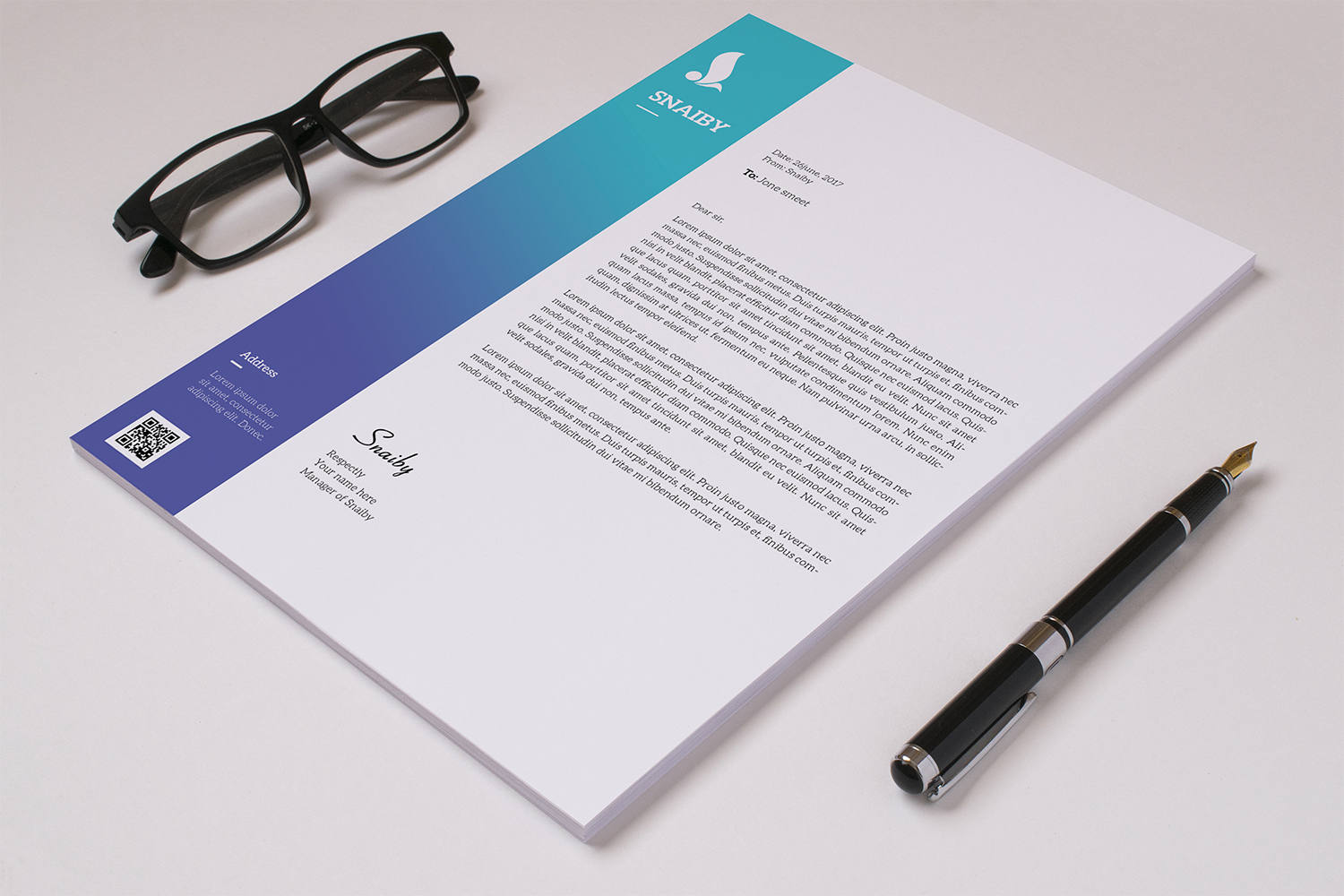15+ Corporate Letterhead Examples to Download
Every business entity must distinguish itself from the competitors. It must have its own unique and consistent personality and style so that people remember them easily. This is the role of branding. Branding does not only involve the logo of the company but also involve all the things necessary to market your company and your products and services.
In every design that you create for your company, you must see to it that it is related to all the designs you have for your company. For example, it may contain the same color scheme or similar graphics. In this way, people will identify you even just in your design. Using professional letterheads for your official documents and leveraging customizable letterhead templates ensures that your branding remains consistent and easily recognizable.
The smart goal is to let people remember and be familiarized with you and what you can offer to them. Similarly, in your business papers, you must also incorporate designs that are consistent in all of your designs. This is in the form of letterheads. Letterheads can be found on top of your business document and contains your company identities.
Not sure on how to create your own corporate letterheads? Below are several examples that is a must-see. Check them all now. Also check on these letterhead designs as well:
Corporate Letterhead Example

Personalized Creative Letterhead Template

Fully Editable Corporate Letterhead
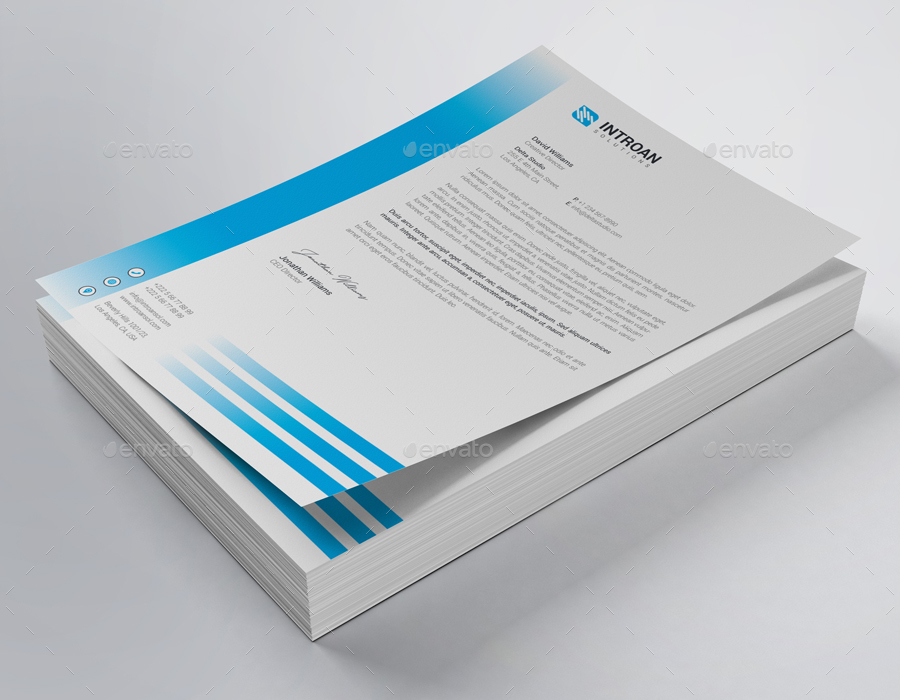
What Is a Letterhead?
Letterhead commonly refers to the heading that can be found at the top of any business document in one’s company. It bears the name, logo, and address of the company to serve as an identification and branding. Branding is important in a company for the people to notice and remember them. Having an enhanced branding means that your company is trusted. However, this does not only pertain to the heading portion of the paper. It also encompasses the whole sheet of imprinting. You may also like wedding logo design examples.
Letterheads are helpful to prove the authenticity and credibility of a company. If you have a professional and elegant letterhead, people will respect you and believe in your ability. It is like adding value, worth, or esteem to your company. People will prefer companies with proper branding as compared to those companies that do not bear a name at all. You may also check out abstract logo designs.
Corporate Letterhead with MS Word
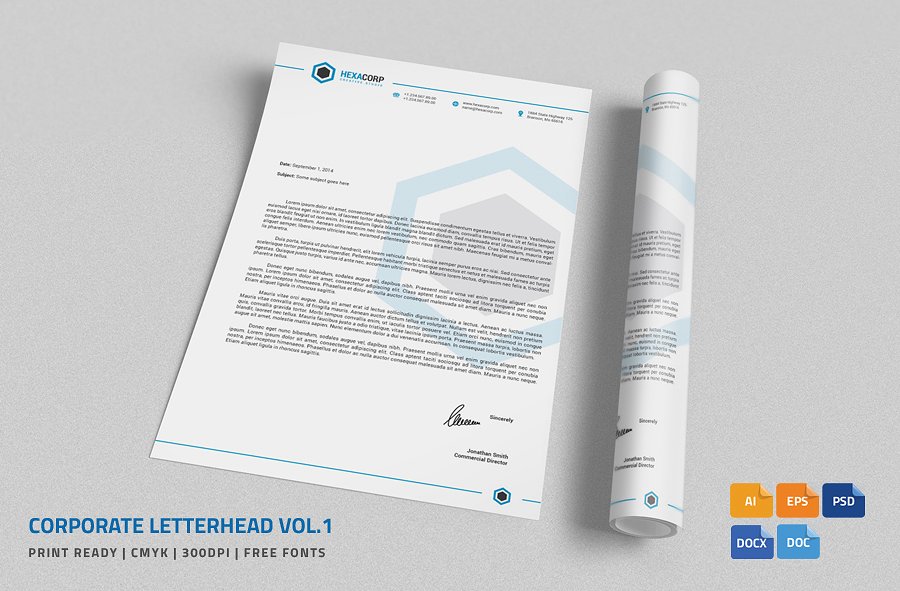
Corporate Business Letterhead Template
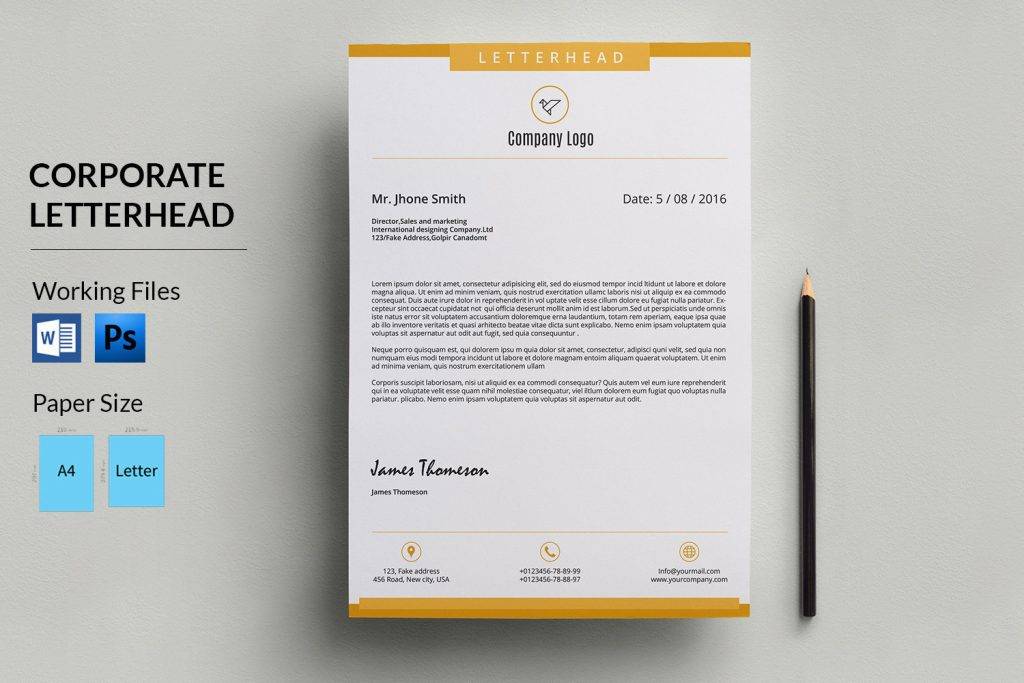
Print Ready Corporate Letterhead
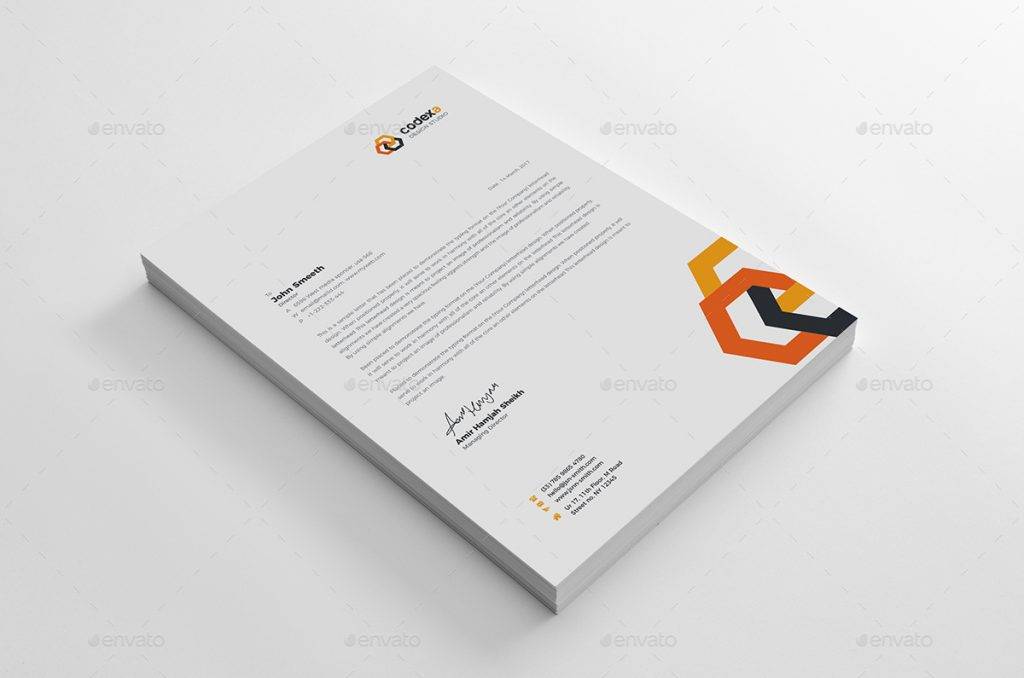
Corporate Letterhead Template in Photoshop and MS Word

Types of Paper for Your Letterhead
There are numerous types of papers that you can choose from—coated or uncoated, laid, bond, or wove, thick or thin, and dull or bright. There are tons of varieties of paper, but you must understand first the characteristics of these papers before deciding on what is the best paper for your documents. You may also check out examples of business logos.
1. Coated Paper
Coated paper has a smooth finish because it has a coating on its face. The coating is usually china clay, and this is available in gloss, silk, satin, or matte. This can also mean the type of paper finish. Usually, you can use this for leaflets, simple menus, and glossy brochures. This is sometimes referred to as art paper.
2. Uncoated Paper
This paper is less smooth as compared to the previous one being discussed as this does not have a coating. However, one great advantage for this type of paper is that it is suitable for laser printing and photocopying. This can be used in stationery, attractive brochures, flyers, and business cards for the thick uncoated paper.
3. Laid Paper
These are premium quality paper with textured pattern or parallel lines that are often used for business stationery. It has a ribbed texture imparted by the manufacturing process. This can be used by artists as a support for charcoal and graphite drawings. You may also see event management logo designs.
Laid paper was the predominant kind of paper produced in the 12th century into the early 19th century, which was the pre-mechanical period of European papermaking. However, it is diminished in the late 19th century when wove paper takes the center stage.
4. Wove Paper
Wove paper is a type of writing paper with a uniform surface. Usually, this paper is not ribbed or watermarked. To produce laid paper, the type of paper discussed above, the papermaking mold’s wires are run parallel to each other. However, to produce wove paper, they are woven together into a fine wire mesh. The originator of this new papermaking technique was James Whatman. Today, more than 99% of the world’s paper is made in this way. You may also like examples of corporate logos.
A variation of this paper is the Whatman paper, named after James Whatman himself, which is a grained, strong, and rigid paper without laid lines and is known for its exceptional quality. This is often used in publishing, filtering, and chromatography.
5. Bond Paper
A bond paper is usually a cheap uncoated wove paper that is used for photocopiers and faxes. Although this paper is cheap, it is also a high quality durable writing paper similar to bank paper. It has a weight greater than 50 gsm, the most common weights of which are 60 gsm, 75 gsm, and 90. It has been called bond paper because it was originally made for documents such as government bonds. You may also check out service logo design examples.
For now, they are being utilized for letterheads and other stationery as well as paper for electronic printers. They can sometimes contain rag fiber pulp that is useful for graphic work involving pencil, pen, and felt-tip marker, producing a stronger, though rougher, sheet of paper.
6. Paper Thickness
The thickness of the paper is measured in grams per square meter or simply gsm. 80 gsm is usually the thickness for low-grade photocopier paper, 100 to 120 gsm for simple letterheads in which 120 gsm is being used for good quality letterhead, 300–350 gsm for business cards, and 300–350 gsm for elegant flyers.
Some papers may be deceiving and appear to be thicker or bulkier than others, despite being the same weight. Uncoated papers are bulkier than coated papers while matte and silk coated papers are bulkier than gloss.
Modern Corporate Letterhead

Clean Corporate Letterhead
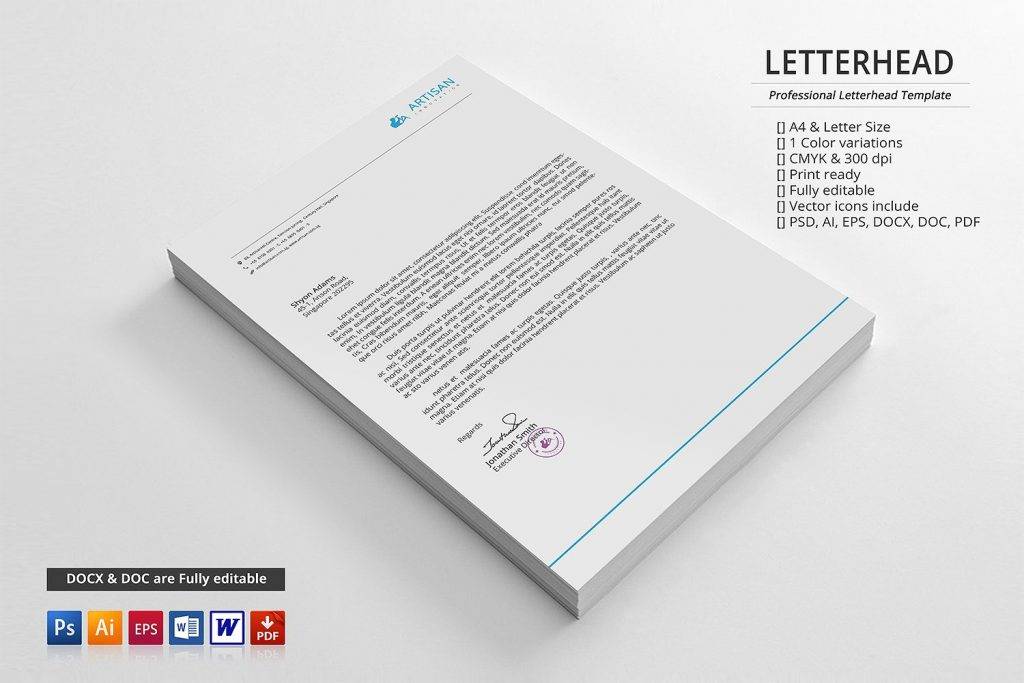
Professional Corporate Letterhead Template
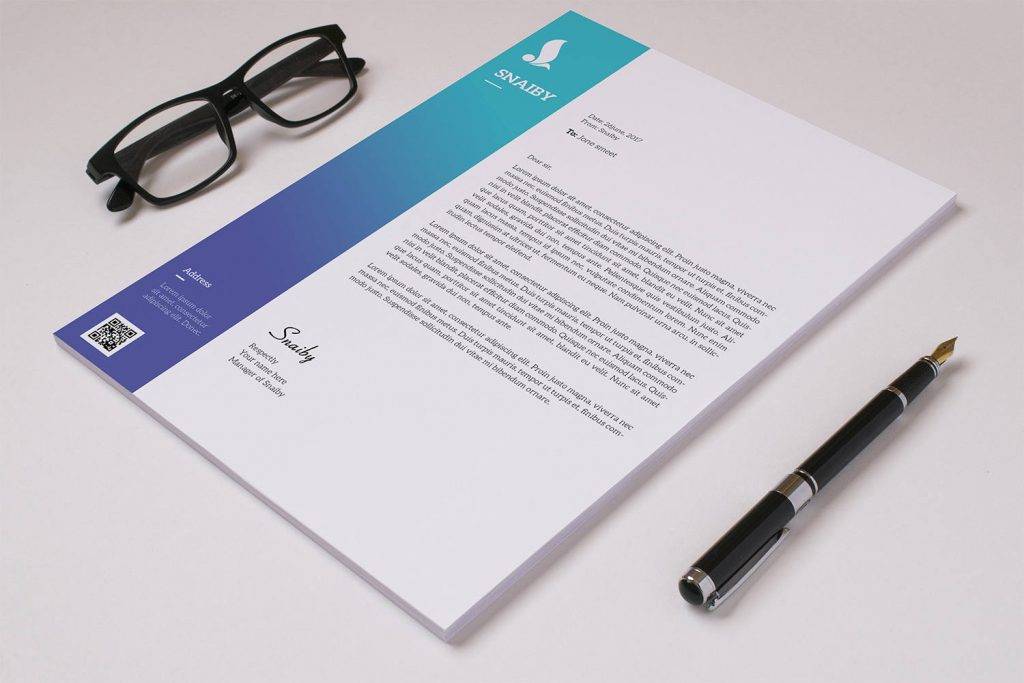
Selecting the Right Paper
At the end of the day, you are to decide your own paper type, size, and finish for your letterhead. You may take the opinion of others, but the final decision is yours.
Take time to decide on which paper is best for your business documents, and always remember to avoid reprinting costs; hence, you must choose wisely and always seek for advice from experts or those who have already experienced printing some marketing collaterals, advertising materials, business documents, and any other papers for your business. You may also see examples of restaurant logo.
You may also create documents with full colors or photographs and illustrations. In order to do this, you must use a coated paper to accomplish a vibrant color. You may also use gloss paper for reproduction or silk or matte, depending on what you prefer.
Editable and Print-Ready Corporate Letterhead
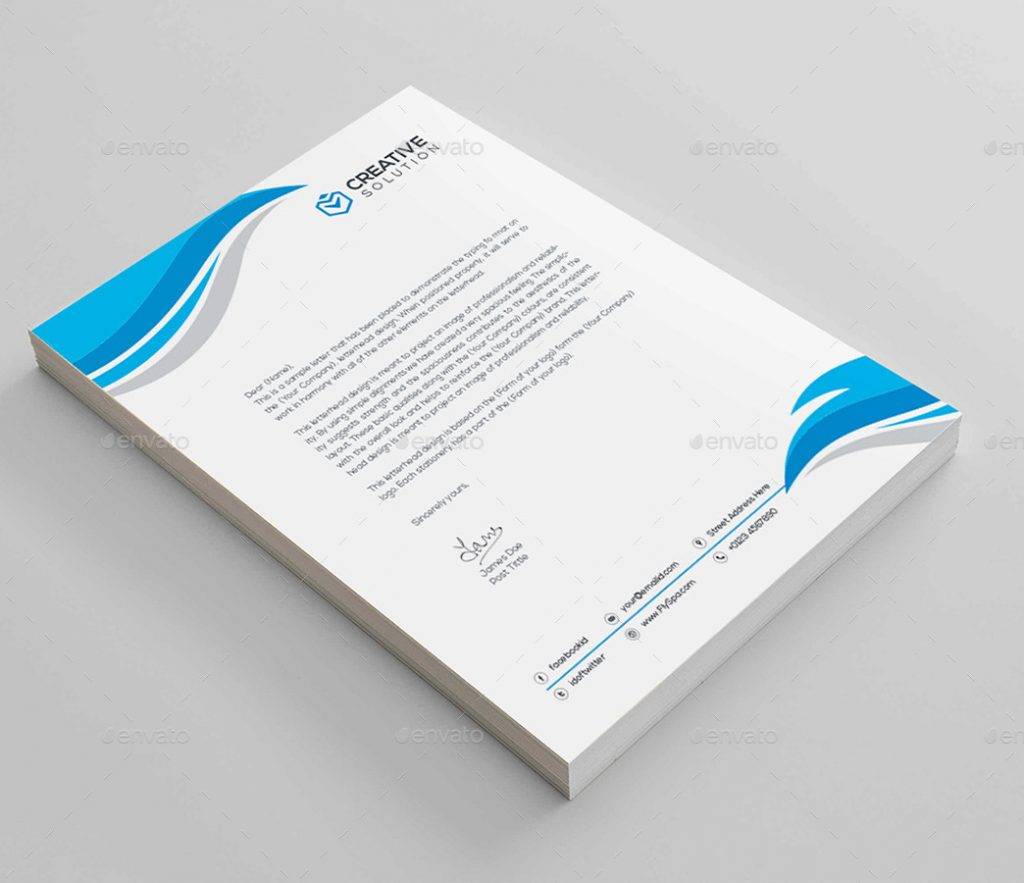
Clean and Modern Corporate Letterhead
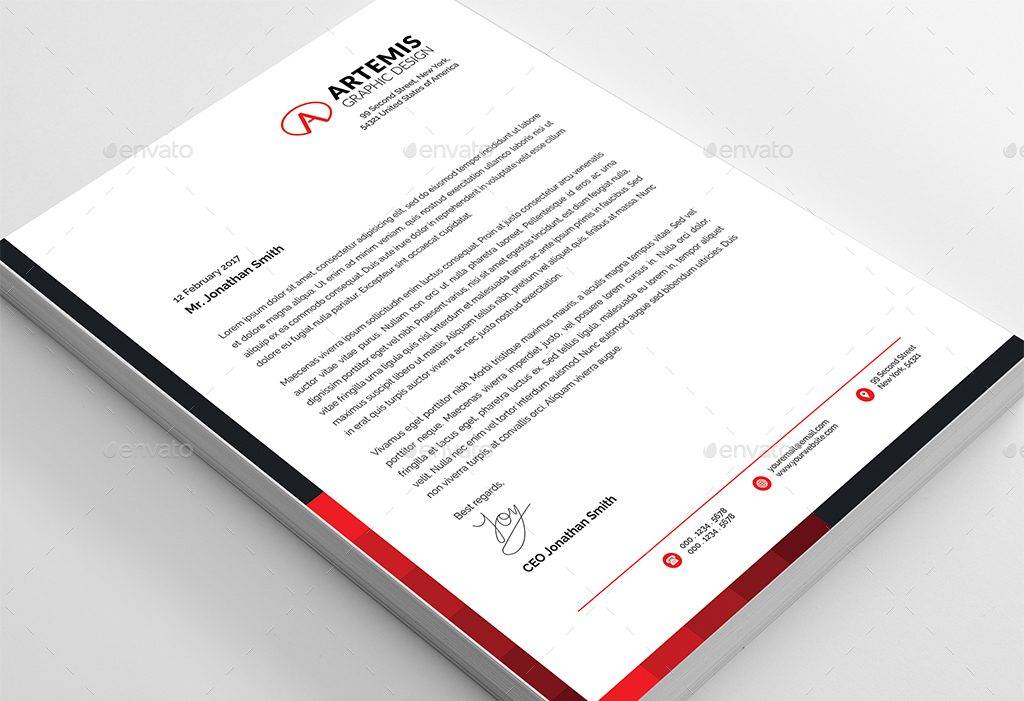
Corporate and Clean Brand Letter Template

Final Say
There are many varieties of paper thickness and sizes that you can choose from for your business documents. So take time to know each one of them or better if you get samples on each type of paper.
Take time to decide on which paper you want for your documents as there is no turning back the moment that the paper is already printed with your letterhead. Some printing service companies would also help you and give advice regarding the type and appropriate paper. Invest in good-quality printing, do not settle for cheaper prices with poor quality. You may also check out examples of the best logo designs.
Lastly, keep yourself updated with the latest trends and designs of letterheads that is perfect for your business, and embrace change if necessary.


